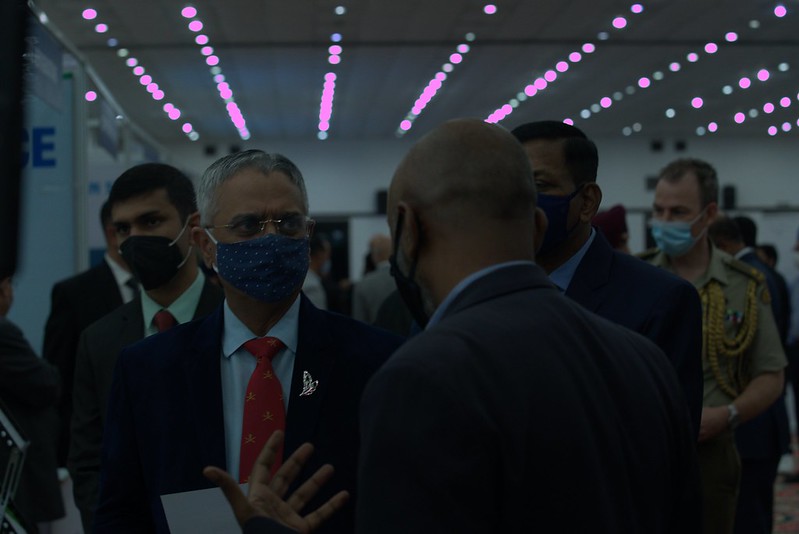Editor-in-Chief’s Note
After a tentative start during the first tenure of the Narendra Modi Government in 2014, major structural, functional and attitudinal reforms have been accelerated in India’s Ministry of Defence, starting from the appointment of the country’s first Chief of Defence Staff (CDS), creation of the Department of Military Affairs to corporatising the century-plus old Ordnance Factory Board (OFB) and improving ease of doing business in defence. The MoD under Defence Minister Rajnath Singh has carried far-reaching changes since 2019 in South Block that houses the top offices of the Ministry. This month in our special series, BharatShakti.in, brings you a series highlighting the major milestones in this ongoing journey that makes India’s defence sector one of the most sought-after the world over.
………………………………………………………………………………………………………………..
Not so long ago, the issue of the Indian Armed Forces being hugely dependent on foreign equipment was inviting scathing criticism from all quarters. Approximately 60 per cent of the Indian inventory was foreign sources. In a world in transition with a power shift to the East, old geopolitical partnerships are in an ambiguous state, while new arrangements like AUKUS, QUAD and a host of bilateral security agreements have either taken shape or are evolving. The Chinese belligerence has led to a massive overhaul in the Indian security prioritisation. Without the threat from the West receding, and the threat from the North increasing, the larger manifestation of such a threat is quite plausible in a more proximate time frame. Under the circumstances, the need to indigenise the inventory is on top of the Indian priority list.
Perhaps, no other Ministry of the Government of India has pursued Atmanirbharta (self-reliance) with greater zeal than the Ministry of Defence (MoD). Hitherto untried measures have been executed, backed by policy changes that should, in due course of time, pave the way for a major shift, with a higher percentage of Indian defence platforms being of domestic origin.
Defence Research and Development Organisation (DRDO) is often castigated for breaching timelines has been announcing testing of various contemporary systems ever so often. A slew of measures launched to incentivise the private sector by providing an assured market domestically and export simultaneously to achieve the desired results. Of course, not every item can be indigenous, and simultaneously efforts have been directed at foreign equity evaluating India as a worthwhile defence manufacturing destination.
Policy Formulation to Enhance Domestic Defence Production
A whole range of measures have been taken to enhance the market for domestic products. A lot of these are time-bound steps that cater for the fact that Indian forces’ capabilities do not degrade as we run the race to Atmanirbharta.
Defefence Acquisition Procedure (DAP) 2020
The all-important policy document that’s been released in the recent past is the DAP 2020 that has set on course a more enabling environment to both speeds up the procurement process, as also incentivise private industry participation in defence production. It refines areas addressed by its previous version, DPP 2016, a remarkable document that had initiated a tide of change in processes. DAP 2020 simplifies trials procedures, incentivises the use of domestic IT and electronics thus bringing benefits to the logistics chain that serves the defence and aerospace industries. The DAP 2020 reduces the timespan for procurement from an average of five years plus to two years.
Raising Foreign Investment Limits to 74 per cent
Recognising the fact that we need OEMs to invest in defence production in the country and that the 49 per cent gateway through the automatic route was inadequate to attract investments, the government has raised it to 74 per cent, with the provision of 100 per cent investments in critical sectors with due government approvals.
Corporatisation of Ordnance Factory Board (OFB)
The issue of OFB not delivering optimally has been a sour point for decades. These establishments had become a burden on the state for a host of managerial issues. The government took a bold step and corporatized the entire gamut, surprisingly avoiding an anticipated major backlash by the employees. The OFB corporatisation protects its current employees adequately while creating an environment where competition for market share and the need to generate their own revenue would force efficiency in their organisation.
Simplified Trial & Testing Procedures
The lack of testing facilities and lengthy trial procedures have been the bane of Indian acquisition processes. The new DAP 2000 and other measures have served to usher in improvements.
Ease in Export Procedures
One of the areas where progress has been maximised is the area of exports. The procedures have been simplified and ease of conducting business ensured through IT. India now finds mention in tables ranking major arms exporting countries. By use of IT approvals for exports are often received in a week or even less as compared to months of waiting and repeated visits to the Ministry offices of the past. The most recent success in exporting a major system, is the recently reported sale of BrahMos missiles to Philippines.
Creating Assured Domestic Market

Budgetary & Financial Issues: The issue needs to be viewed in the context of the fact that India ranks among the top five largest defence spenders, globally. Such a budget creates a huge market. In this budget, should the proportion of Capital Expenditure be enhanced through efficiencies, major systems in larger quantities can be contracted. Further, should a part of this expenditure be reserved for procurement from domestic sources, it boosts the market size for domestic players.
The Capital Budget has been enhanced by 31 per cent between 2019-20 and 2021-2022. Earmarking budget for domestic industry started in 2020-21. Rs 51,931.59 crores was earmarked for domestic industry in 2020-21 (58% of total capital procurement). Rs 71,438.36 crores has been earmarked for domestic industry in 2021-22 (64% of total capital procurement). Again a first, is earmarking of 15% of total capital procurement budget for procurement from private industry in 2021-22.
Notifications Restricting Import of Equipment: Two lists of defence equipment, one for 101 items in August 2020, and the other for 108 items February 2021, have been notified which cannot be imported. Keeping in view the fact that indigenous production of all the listed items may not be possible in India immediately, the embargoes will come into effect over a period of four years. The approach gives time to the domestic industry to build its capabilities and also ensures operational capabilities of the forces are not eroded in the interim.
Large Orders for the Domestic Defence Industry
Major orders have been placed in the past few years that will lead to substantial flow of funds to the industry. The industry, as a whole, benefits when large orders are placed. While major systems and sub-systems are the forte of the larger Indian OEMs primarily, these establishments have a long list of MSMEs and start-ups who undertake the manufacture of components and sub-systems. It’s the benefit the entire eco-system draws, that is more important. Some of the major orders and approvals by the Defence Acquisition Council (DAC) are as under:
- Procurement of 83 LCA Mk 1A. The order is bound to breathe-in life into HAL, which had been gasping for lack of orders in its fighter category. It also provides a huge avenue for progressing towards larger and more potent platforms for the Indian Air Force (IAF).
- Orders have been placed for 118 Arjun Mk 1 tanks. The tank has been derided for its excessive weight. Of course, there’s no employment envisage able for such a heavy tank in the mountains, however, India’s western neighbours are not reliable, either.
- Procurement of 6 AEW & C block II aircraft that will considerably boost Indian capabilities in air defence.
- Procurement of 248 Astra Mk I beyond visual range air defence systems. Incidentally, the odd potential foreign buyer is already showing interest in the equipment.
- In addition, large numbers of artillery guns are to be purchased from the Indian industry. Similarly, there is a requirement of light tanks, over a thousand helicopters of all types of 5th Generation fighter aircraft, large numbers of transport aircraft, submarines and ships.
If India retains its focus on atmanirbharta, the domestic defence industry will not only grow but also be a major plank of the Indian economy’s climb out of the COVID pit. However, in the interim, the government shouldn’t at any cost, forego capability requirements while awaiting the Indian industry delivering state of the art products that meet user needs. Apparently, the Indian government is aware of it. The imports of Rafale, Chinooks, Apache, S-400 missile system and a host of other equipment is proof of a rational approach.
Brig SK Chatterji (Retd)






















